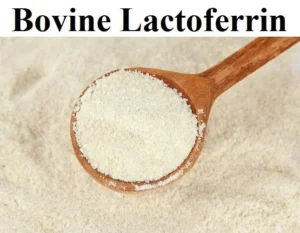what is Nutrition Therapy In Gestational Diabetes ?

A young pregnant woman preferring a healthy natural food. Fresh vegetables.
Nutrition Therapy for a woman in Gestational Diabetes
Body Mass Index (BMI)
Use pre pregnancy weight for calculations
Weight and height measurements to calculate BMI:
BMI = weight in kg/(height in m)2
Standard BMI normograms
| Asian | ADA norms | |
| Underweight | <18.5 kg/m2 | |
| Normal BMI | 18.0-22.9 kg/m2 | 18.5-24.9 kg/m2 |
| Overweight | 23.0-24.9 kg/m2 | 25.0-29.9 kg/m2 |
| Obesity | >25 kg/m2 | > 30 kg/m2 |
Composition of Food and Drinks
Macro-nutrients
- protein
- carbohydrates
- fats
Micro-nutrients
- vitamins
- minerals
-
Nutrient % of daily calorie intake Carbohydrates 45-65% Fats 20-35% Protein 10-35%
Proteins
- Provide amino acids
- Help to build muscle mass

- Animal sources
- Plant sources
- 1 g of protein gives 4 kcal energy
Protein Recommendations
- 1.1 g protein per kg bodyweight per day
- 10-35% of total energy per day
- Animal protein often high in fat, especially saturated.
- Attention must be paid to meeting the protein requirements of women who are vegetarians or vegans
Carbohydrates
- Provide main source of energy for the body (45-65%) – individualized
- Nutrient that most influences blood glucose levels
- Source of simple sugars – glucose, fructose
- 1 g of carbohydrate provides 4 kcal
Carbohydrates And Meal Planning
- Amount and source of carbohydrates is considered when planning meals
- Recommended source of carbohydrates is mainly from
-whole grains: wheat, rice, pasta, bread, rice, wheat, barley, oats, maize and corn
-legumes, beans, pulses (bengal gram, black gram, rajma)
-fruit and vegetables
-milk
Carbohydrate (CHO) content of common foods
| Food | Amount | Serving | CHO (g) |
| Bread, whole wheat | 28 g | 1 slice | 11 |
| Rice (cooked) | 75 g | 0.3 cup | 13 |
| Pasta | 125 mL | 0.5 cup | 16 |
| Chappati | 44 g | 1 small | 19 |
| Corn meal | 45 mL | 3 tbsps | 16 |
| Potato | 84 g | 1 small | 15 |
| Couscous, cooked | 125 mL | 0.5 cup | 17 |
| Lentils | 250 mL | 1 cup | 15 |
| Banana | 101 g | 1 small | 20 |
Benefits of Fibre
A high-fibre diet is healthy
Mixture of soluble and insoluble fibre
-slows absorption of glucose
-reduces absorption of dietary fats
-retains water to soften stool
-may reduce the risk of colon cancer
-may reduce the risk of heart disease
Fibre Recommendations
Recommended amounts of total fibre : 28 g per day
Sources of insoluble fibre include: wheat bran, whole grains, seeds, fruits and vegetables
Sources of soluble fibre: legumes (beans), oat bran, barley, apples, citrus fruits
Glycaemic Index (GI)
Ranks carbohydrate-rich foods according to the increase in blood glucose levels they cause in comparison with a standard food (white bread/glucose).
Factors Affecting the Glycaemic Index
Type of sugar
-glucose, fructose, galactose
Nature of starch
-amylose, amylopectin
Starch-nutrient interactions
-resistant starch
Cooking/food processing
Glycaemic Index of Foods
| Low glycaemic index foods | Intermediate glycaemic index | High glycaemic index |
| Oats | Multigrain bread | White Bread |
| Lentils/dhal | Some rice (long grain) | White Rice |
| Yogurt | Pasta | Processed breakfast cereal |
| Milk | Bananas | Glucose |
| Most Fruits and vegetables | Grapes | Mashed and baked potatoes |
Vitamins
- Organic substances present in very small amounts in food
- Essential to good health
- A balanced meal automatically provides all necessary vitamins
- Either fat-soluble or water-soluble
- In some countries foods are “fortified” with vitamins and minerals
Vitamin Recommendations
Daily multivitamin supplement should be added as they are often not met by diet alone.
Multivitamin content varies depending on the product used.
Women at higher risk for dietary deficiencies include multiple gestation, heavy smokers, adolescents, complete vegetarians, substance abusers, and women with lactase deficiency.
Minerals
- Substance present in bones, teeth, soft tissue, muscle, blood and nerve cells
- Help maintain physiological processes, strengthen skeletal structures, preserve heart and brain function and muscle and nerve systems
- Act as a catalyst to essential enzymatic reactions
- Low levels of minerals puts stress on essential life functions
Sodium Recommendations
- Most people consume too much salt
- Sodium restriction may be advised in case of uncontrolled hypertension and edema
- Targets for daily sodium intake
| Age | Adequate Intake (mg/day) | Upper limit
(mg/day) |
| 14-50 | 1500 | 2300 |
| 51-70 | 1300 | 2300 |
| over 70 | 1200 | 2300 |
Lowering Salt Intake
- Sodium content is often high in restaurant foods
- Encourage meal plans with
- more fresh foods – fruits and vegetable
- less processed, fast, convenience or canned foods
- herbs and spices used when cooking instead of salt.
- Teach people to read food labels
- Choose salt free, reduced or low in sodium foods






